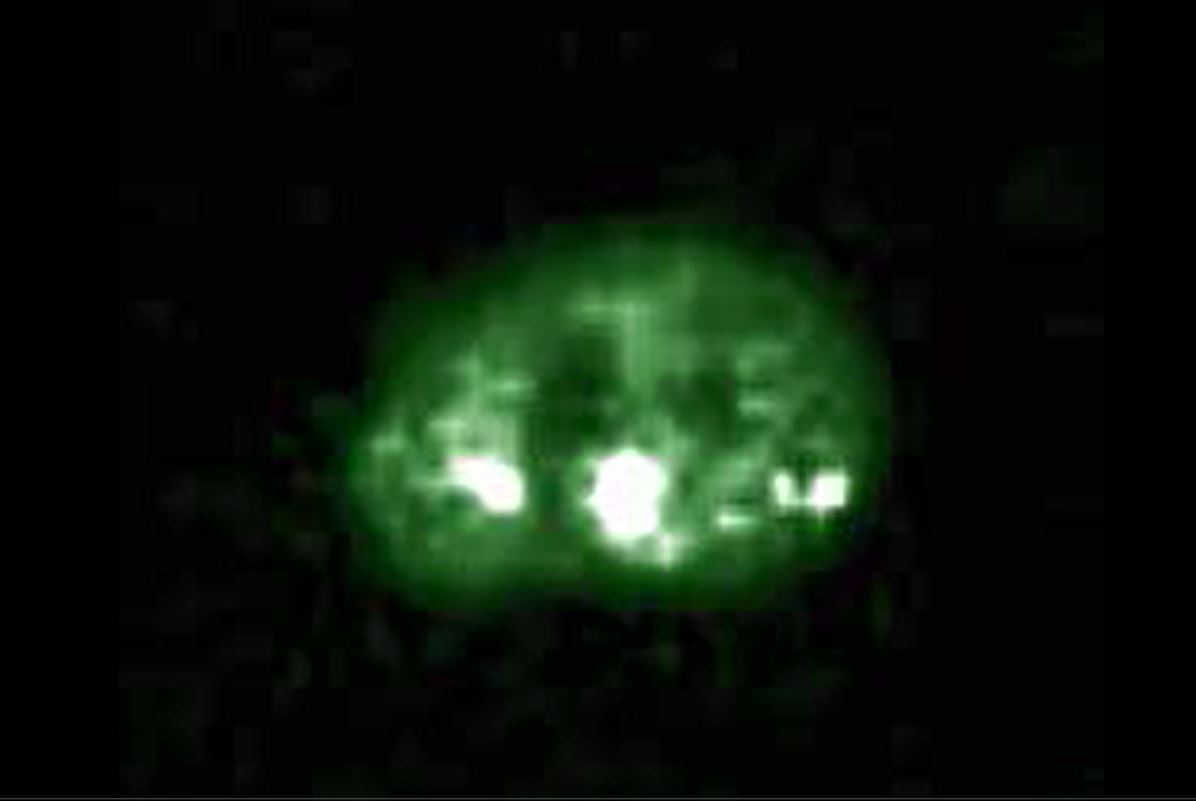A pivotal study has successfully sequenced and assembled the chromosome-level genome of chieh-qua, a cucurbit crop with significant economic and cultural importance in Asia. The high-quality genome assembly provides a comprehensive genetic blueprint, revealing the crop’s genetic diversity and evolutionary history.
Tag: Genome
Desert hero unveiled: Cissus quadrangularis genome decodes drought survival tactics
In a recent study, scientists have unlocked the genetic secrets of Cissus quadrangularis, a plant that flourishes in the harshest of desert climates. The discovery of its adaptive traits and the Crassulacean acid metabolism (CAM) pathway marks a significant leap forward in the quest for drought-resistant crops.
Advances in Rice Genome Research Offer Insights and Promising Applications for Agriculture
A research team has achieved a groundbreaking improvement in the haplotype-resolved genome sequence of the japonica rice cultivar Nipponbare.

Scientists Track ‘Doubling’ in Origin of Cancer Cells
Working with human breast and lung cells, Johns Hopkins Medicine scientists say they have charted a molecular pathway that can lure cells down a hazardous path of duplicating their genome too many times, a hallmark of cancer cells.
Orchid Welcomes Distinguished Clinical and Genetics Leaders to its Advisory Boards
Orchid, a reproductive technology company offering the world’s only commercially available whole genome embryo screening, today announced Dr. Amber Cooper, Dr. Roohi Jeelani, and Jerry Lanchbury, Ph.D as new members joining their Medical and Scientific Advisory Board.
Electronic Health Records Unlock Genetics of Tobacco Use Disorder
By utilizing the power of electronic medical records, researchers from UC San Diego are uncovering the genetics of tobacco use, which would help scientists discover new ways to stop occasional tobacco use from evolving into tobacco use disorder.

Sweet Success: Researchers Crack Sugarcane’s Complex Genetic Code
Scientists created a highly accurate reference genome for one of the most important modern crops and found a rare example of how genes confer disease resistance in plants. Exploring sugarcane’s genetic code could help researchers develop more resilient and productive crops, with implications for both sugar production and biofuels.
Weedy rice gets competitive boost from its wild neighbors
Weedy rice is an agricultural pest with a global economic impact. It is an aggressive weed that outcompetes cultivated rice and causes billions of dollars in yield losses worldwide. A study from Washington University in St. Louis offers new insights into genetic changes that give weedy rice its edge over cultivated rice in tropical regions of the world.
Junk DNA in birds may hold key to safe, efficient gene therapy
The recent approval of a CRISPR-Cas9 therapy for sickle cell disease demonstrates that gene editing tools can do a superb job knocking out genes to cure hereditary disease.
Genetic risk prediction for 10 chronic diseases moves closer to the clinic
As part of a nationwide collaboration, Broad Clinical Labs researchers have optimized 10 polygenic scores for use in clinical research as part of a study on how to implement genetic risk prediction for patients.
Extra Fingers and Hearts: Pinpointing Changes to Our Genetic Instructions That Disrupt Development
Scientists can now predict which single-letter changes to the DNA within our genomes will alter genetic instructions and disrupt development, leading to changes such as the growth of extra digits and hearts.
Find-and-replace genome editing with CRISPR: A promising therapeutic Strategy
CRISPR-Cas9-based genome editing offers hope for treating severe immunodeficiency disorders like SCID, with a novel approach for precise gene replacement, reducing risks and potentially aiding various genetic diseases.
You say genome editing, I say natural mutation
For tens of thousands of years, evolution shaped tomatoes through natural mutations. Then, humans came along. For centuries, we’ve bred and cherry-picked tomatoes with our preferred traits.
Illinois-led project to sequence 400 soybean genomes, improve future crops
As a source of protein and biodiesel for cleaner renewable energy, soybean is an important crop worldwide. But is it performing to its full potential?
Genome study reveals 30 years of Darwin’s finch evolution
An international team of researchers has released a landmark study on contemporary evolutionary change in natural populations. Their study uses one of the largest genomic datasets ever produced for animals in their natural environment, comprising nearly 4,000 Darwin’s finches.

Green Genetic Engineering: Making Mendel’s Dream Come True with Molecular Scissors
Molecular biologist Professor Holger Puchta from Karlsruhe Institute of Technology (KIT) is granted funding within a Reinhart Koselleck Project by the German Research Foundation (DFG) for work on specific restructuring of plant genomes. Puchta, a pioneer of green genetic engineering,…
Breakthrough microscopy technique “supersizes” cells to reveal genetic activity
Breakthrough microscopy techniques are helping researchers visualize the ways our molecules interact with the human genome. Researchers at Yale School of Medicine used a series of expandable gels to pull apart a cell and expand it to 4000 times its…
MSU researchers uncover the hidden complexity of the Montmorency tart cherry genome
Since Michigan is the nation’s leading producer of tart cherries, Michigan State University researchers were searching for the genes associated with tart cherry trees that bloom later in the season to meet the needs of a changing climate. They started by comparing DNA sequences from late-blooming tart cherry trees to the sequenced genome of a related species, the peach. However, in a surprise to the researcher, the genetic discrepancies between the species outweighed the similarities. This led the team to create the first annotated Montmorency tart cherry genome and identify the DNA segments that code for each gene.

Van Andel Institute, Washington University School of Medicine in St. Louis to lead genome center under $140M NIH initiative
Van Andel Institute’s Hui Shen, Ph.D., and Washington University School of Medicine in St. Louis’s Ting Wang, Ph.D., will co-lead a collaborative project supported by the Somatic Mosaicism across Human Tissues (SMaHT) Network, a new $140 million National Institutes of Health-led effort to better understand the genetic differences between individual cells and tissues in the body.
Fungal genetics could help develop novel biotechnologies
An essential pillar of Earth’s ecological system, fungi have long been used to better the lives of humans. While these organisms are still vastly understudied, a new review paper suggests that their unique genomes could be used to make progress in the biotech industry.
Study: SARS-CoV-2, the virus causing COVID-19, can alter genome structure of our cells
People infected with SARS-CoV-2, the virus that causes COVID-19, may experience genome structure changes that not only may explain our immunological symptoms after infection, but also potentially link to long COVID, according to a new study by researchers at UTHealth Houston.
UNLV Study Sheds Light on Ancient Microbial Dark Matter
Omnitrophota are nano-sized bacteria first discovered 25 years ago. Though common in many environments around the world, until now they’ve been poorly understood. An international research team produced the first large-scale analysis of Omnitrophota genomes, uncovering new details about their biology and behavior. The team’s findings are reported in the March 16 issue of the journal Nature Microbiology.
New discovery to bulk up gluten-free fibre supplement
Scientists have for the first time constructed the reference genome for the source of the popular fibre supplement, psyllium husk, which could boost supplies of the versatile plant-derived product.
Major Breakthrough As Scientists Sequence The Genomes Of Endangered Sharks
Scientists have sequenced the genomes of Critically Endangered great hammerhead and Endangered shortfin mako sharks for the first time.
Large-Scale Study Led by Fred Hutch Finds New Genetic Risk Factors for Colorectal Cancer, Paving the Way for Better Screening, Prevention
A comprehensive analysis of more than 100,000 colorectal cancer (CRC) cases, led by researchers at the Fred Hutchinson Cancer Center in Seattle and 200 scientific collaborators worldwide, has identified more than 100 new genetic risk factors strongly linked with the disease.
Genome sequencing supports Nile rat animal model for diabetes research
For the first time, researchers have assembled a high-quality reference genome for the Nile rat, a promising model organism for diabetes research.
NSU Professor Honored with The Explorers Club Prestigious Lowell Thomas Award
Nova Southeastern University (NSU) is proud to announce that one of its own – Stephen J O’Brien, Ph.D. – was honored with The Explorers Club’s 2022 Lowell Thomas Award.
Weedy rice has become herbicide resistant through rapid evolution
Biologists used whole-genome sequences of 48 contemporary weedy rice plants to show how herbicide resistance evolved by gene flow from crop rice. Almost all other cases of herbicide resistance in agricultural weeds result from selection of tolerant genotypes in the weed species.

Juicy research unearths new genome within the tomato family
The first full genome in the tomatillo tribe adds to the rich story of the tomato family.
The Locked Library: Disease Causes Cells to Reorder Their DNA Incorrectly
With super-resolution imaging, Penn Medicine researchers discovered that cells change the physical structure of their genome when they’re affected by disease
Study identifies new dementia risk genes through novel testing approach
A new UCLA-led study has identified multiple new risk genes for Alzheimer’s disease and a rare, related brain disorder by using a combination of new testing methods allowing for mass screening of genetic variants in a single experiment.
Seedy, not sweet: Ancient melon genome from Libya yields surprising insights into watermelon relative
Biologists investigated the oldest known seeds from a watermelon relative, dating back 6,000 years. The researchers shared two new genomes of ancient seeds and described how Neolithic humans in Libya likely used the seeds, not the bitter flesh, from the melons.
DNA recombinations are widespread in human genomes and are implicated in both development and disease
Scientists from the RIKEN Center for Integrative Medical Sciences in Japan in collaboration with other researchers from around the world have discovered that recombinations of specific genomic sequences that are repeated millions of times in the genome of each of our cells are pervasively found in both normal and in disease states. Identifying the mechanisms that lead to this myriad of recombinations involving DNA sequences that were once considered as “junk”, may be crucial to understanding how our cells develop and what can make them unhealthy.

Three New Species of Black-Bellied Salamander Found in Southern Appalachian Mountains
Three new species of black-bellied salamander have been discovered by a research team led by R. Alexander Pyron, the Robert F. Griggs Associate Professor of Biology at the George Washington University. The new salamanders, which are found in the southern Appalachian Mountains of the eastern United States, stem from black-bellied populations that were long considered to be a single species.
New machine learning technique shows how drugs can be repurposed
A new machine learning method to model gene expression levels might improve the identification of genes that cause human diseases, according to a new study by Penn State College of Medicine researchers.
World’s New Stream Frog Found in Myanmar: Chula Researcher Indicates Its Ecosystem Is Intact
A biologist from the Faculty of Science, Chulalongkorn University working with researchers from Germany and Myanmar has discovered two of the world’s newest stream frogs in Myanmar highlighting the remaining diversity of ecosystems in Southeast Asia and cautions all those involved of the need to conserve our forests before our valuable wildlife become extinct.
Researchers Use Model of Hypothalamus to Implicate Genes Associated with Sleep, BMI, Puberty, and More
A new study has implicated several genes involved in a variety of bodily functions associated with the hypothalamus, a notoriously difficult-to-study region of the brain. The findings could help clinicians identify potential causes of dysfunction for many important traits regulated by the hypothalamus, such as sleep, stress, and reproduction.
Can’t Find Your Keys? You Need a Chickadee Brain
For the first time, researchers have shown that there is a genetic component underlying the amazing spatial memories of Mountain Chickadees. Although the genetic basis for spatial memory has been shown for humans and other mammals, direct evidence of that connection has never before been identified in birds.
OPENTRONS ANNOUNCES $200 MILLION SERIES C ROUND LED BY SOFTBANK
Opentrons, the lab automation platform comprised of Opentrons Robotics, Pandemic Response Lab, Neochromosome, and Zenith AI, receives $200 million to scale its platform for life sciences and healthcare.
UNH-Led Team Sequences Shea Tree Genome to Support Breeding and Conservation Efforts
An international team of researchers led by the University of New Hampshire has sequenced the shea tree’s genome, providing a valuable resource for the strategic development of the species which is best known for the popular product shea butter—a multimillion-dollar ingredient used in cosmetics, personal care products, pharmaceuticals and chocolate.
Research provides evidence for how a key transcription factor manages access to DNA
St. Jude Children’s Research Hospital scientists have revealed a previously unknown role for CTCF, a pivotal transcription regulator linked to cancer.
Pinpointing where single-stranded transcripts converted into double-stranded RNAs
St. Jude scientist Vibhor Mishra, Ph.D., is homing in on the location where important processes in gene regulation occur, and where single-stranded transcripts are converted into double-stranded RNAs (dsRNAs).
Comprehensive clinical sequencing opens door to the promise of precision medicine
St. Jude Children’s Research Hospital study highlights the power of comprehensive whole genome, whole exome and RNA sequencing to better understand and treat each patient’s cancer.
Decoding humans’ survival from coronaviruses
An international team of researchers co-led by the University of Adelaide and the University of Arizona has analysed the genomes of more than 2,500 modern humans from 26 worldwide populations, to better understand how humans have adapted to historical coronavirus outbreaks.
UCLA Health receives $4.8M NIH grant to improve genetic estimates of disease risk in diverse populations
UCLA Health will receive a $4.8 million grant from The National Institutes of Health to develop methods that will improve genetic risk estimates – polygenic risk scores – for specific diseases in people from diverse populations and mixed ancestries.
NSU Researcher Part of Team to Sequence the Genome of One of the World’s Most Elusive Big Cats – the Leopard
They are some of the most beautiful, and elusive, animals on the plant. Leopards. In a major scientific step, the whole genome DNA sequence of 23 individual leopards have been interpreted.
NSU Researcher Part of a Flagship Study on Vertebrate Genomes
Unprecedented novel discoveries have implications for characterizing biodiversity for all life, conservation and human health and disease.

Overfishing of Atlantic Cod Likely Did Not Cause Genetic Changes
Overfishing likely did not cause the Atlantic cod, an iconic species, to evolve genetically and mature earlier, according to a study led by Rutgers University and the University of Oslo – the first of its kind – with major implications for ocean conservation.

Evolution drives autism and other conditions to occur much more frequently in boys, genetic researchers say
Evolutionary forces drive a glaring gender imbalance in the occurrence of many health conditions, including autism, a team of genetics researchers has concluded.

Don’t focus on genetic diversity to save our species
Scientists at the University of Adelaide have challenged the common assumption that genetic diversity of a species is a key indicator of extinction risk.